What does the Danish pig industry talk about?
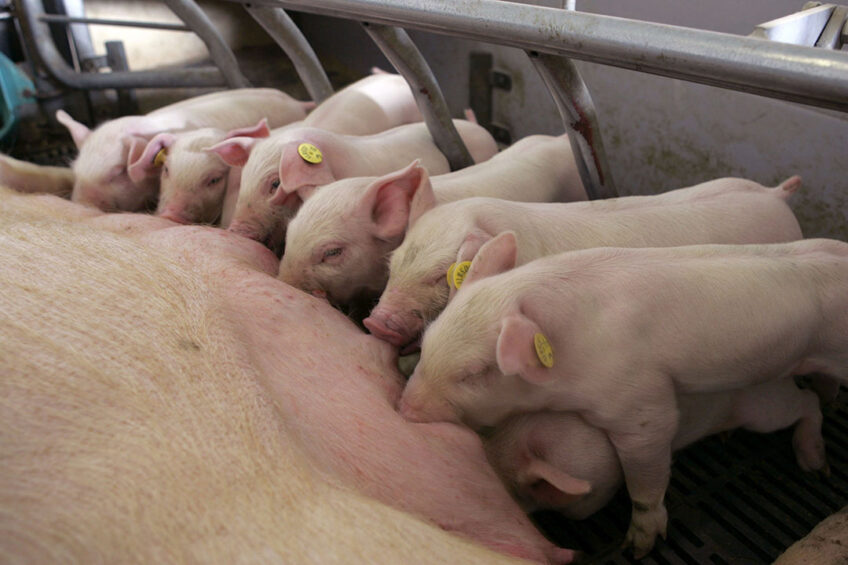
October is usually the month of the Svinekongres, the annual get-together of swine producers in Denmark. Many interesting themes were discussed; pig housing and welfare expert Vivi Aarestrup Moustsen highlights some of the major swine topics the industry is talking about.
I am so proud and happy to be employed by and in the pig industry where farmers, their employees and advisors take responsibility to listen, learn and take home new knowledge and where the experts focus on how their latest results can make a difference for the pigs and the people.
Week 43 is normally the week where many Danish pig producers, their employees and advisors meet in Herning to listen to and learn from latest developments and scientific results, their colleagues’ experiences – and inspiring inputs from outside the ‘pig world’.
This year, there were more than 2,000 participants, 65 presentations, of which 11 were in English and 10 were live streamed to make them available for the ones not being able to attend in Herning in person. Most presentations can be found here.
Even when prices are low and there are many uncertainties and challenges, it is important that pig farm owners take time to listen, learn and take home ways to improve their production, work conditions, climatic footprint of production and relationship with society.
Presentations on day 1 focused on climate, management, economy, growers, sows, health and welfare. On day 2 they continued to focus on management, growers, sows, health and welfare and added on piglets, zinc and surroundings. Below are some of the highlights, in italics behind which presentations correspond to these subjects.
Reducing sow mortality
Examples of presentations were Nicolaj Stidsen (Advisor, Velas) and Lisbeth Ulrich Hansen (SEGES) focusing on how to reduce sow mortality. The first step is within herd, to identify main causes, age group of sows dying and when in the reproductive cycle sow mortality occurs. A frequent cause for euthanisation are claw and locomotory issues – often happening to young sows, which lead to the take-home advice to increase the daily focus on management and housing of gilts. #5 + #23 (English)
We will prefer the dentist using local anasthesia in the right spot and giving it time to be effective over the tooth removal and then the analgesia to cover the pain afterwards
Use of local anaesthesia before castrating
Another presentation was by Hanne Maribo (SEGES) who took the audience through the use of local anaesthesia before castrating male pigs and how it makes good sense to use both local anaesthesia and analgesia. As Maribo said, it is a bit like having a tooth removed at the dentist‘s. We will prefer the dentist using local anasthesia in the right spot and giving it time to be effective over the tooth removal and then the analgesia to cover the pain afterwards. #10 (English)
Pig production in Germany
Roger Fechler (German Farmers’ Association) described the situation in Germany with changes in legislation and according transition periods regarding loose housing of lactating sows and oth-er welfare issues – but also the expectations to the outcome of the Borchert-committee which includes significant extra space for growers in level 2 or higher. #15 (English)
Managing more than 1 pig site
Although the structural development leads to fewer pig producers across Europe, many producers change from owning and managing one or few sites to managing several sites and employing different nationalities with different cultures. Kasper Balslev Sørensen and Andreas Weber (both of Goodvalley in Poland) shared their experiences. One way to increase engagement amongst employees was to include their input regarding how to improve productivity, work environment and resource use. At regular meetings, employees suggested ‘Potential Improvement Points’ (PIP) and took part in prioritising and carrying out the chosen PIP’s. Another point was that it increased efficiency and productivity when production sites were kept tidy and clean which including shift of mindset from cleaning to keeping clean. #20
Before farrowing, ensure all sows have right conditions so they can go through the marathon awaiting them
The important time of farrowing
We arre all highly dependant on successful farrowings to ensure piglets a good start in life. Veterinarian Inger Mothorst (Ø-Vet) and Ann Freja Mørch Jensen (SEGES) lead the audience through the important time of farrowing and instead of ‘blindly’ measuring rectal temperatures, use eyes, ears, nose and hands to identify sows at risk. Before farrowing, ensure all sows have right conditions so they can go through the marathon awaiting them. During farrowing, focus on sows where piglets are dry, indicating it has been some time since birth of last piglet and after farrowing on sows not eating their ration or not drinking sufficient water. #43 + #57 (English).
How to improve piglet survival?
How to improve piglet survival was addressed in a number of presentations including one by Dr Thomas Thymann (University of Copenhagen) and myself (SEGES), where Dr Thymann explained how he and his staff obtains close to 100 % survival of piglets born by caesarean section at day 106 of gestation by following a seven-step protocol. An important factor being that the steps were carried out within the first hour of the piglets’ life. #27
To exploit the milk production potential, the pitfalls need to be known, eliminated or at least reduced impact, which includes reducing moving of piglets
Factors determining high milk yield
Do sows or piglets determine a high milk yield? That question was answered by assistant professor Uffe Krogh (Aarhus University) and Trine Friis Pedersen (SEGES). The sow’s milk production potential is estimated to be 25kg/day. However, it requires healthy sows with many functional teats, the right conditions including good access to and space at the udder, high litter size, large and viable piglets at birth and a well-nourished sow in a perfect condition. The udder is 80% full 35 minutes after a milk letdown, and the milk letdown itself only last 8-10 seconds. To exploit the milk production potential, the pitfalls need to be known, eliminated or at least reduced impact, which includes reducing moving of piglets. #34 (English) + #48
Above are some snapshots. Many more presentation deserved to be mentioned, however, these ones show the continuous ambition to learn, improve and develop. If we do nothing different, we will get nowhere, but if we are determined to learn, no one can stop us.
 Beheer
Beheer
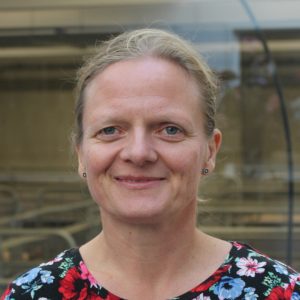
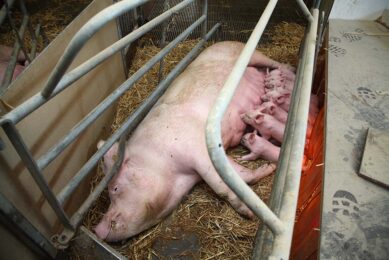
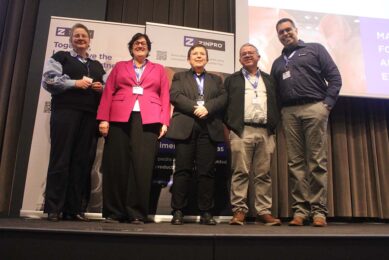
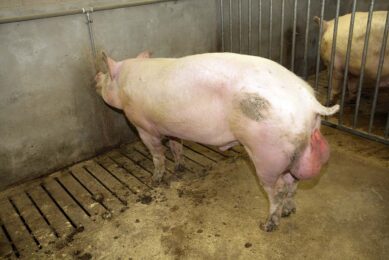




 WP Admin
WP Admin  Bewerk bericht
Bewerk bericht